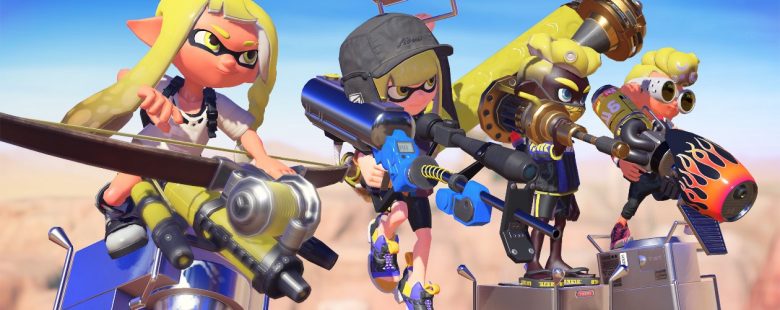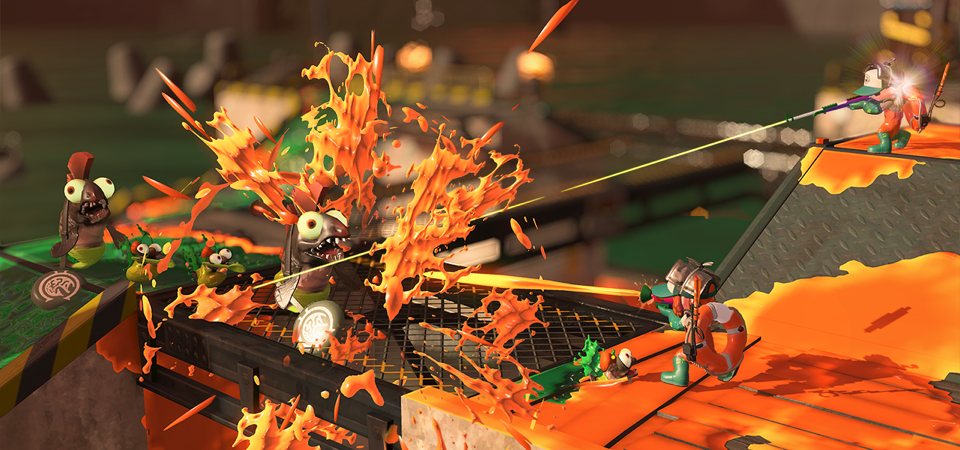With the announcement of Splatoon 3 during the recent Nintendo Direct, I’ve found myself putting some serious playtime into Splatoon 2 again, being sucked back in by the addictive progression systems, and the unmistakably “Nintendo” take on multiplayer shooter gameplay.
While I do truly enjoy my time with the game (even as I approach 200 hours), there are some noticeably disappointing aspects that are common between the 2015 original and its sequel that keep the overall package from being truly outstanding. So, as a bright-eyed fan looking to this new release with enthusiasm following that first Splatoon 3 teaser, I’ve decided to compile a list of five areas that could be improved in this upcoming third entry.
1. Bigger campaign
Despite boasting some compelling level design, intriguing worldbuilding for lore-buffs, and having standout boss fights, Splatoon’s single player offerings have always felt a bit underwhelming. Splatoon 2 sought to remedy this fact with its Octo Expansion DLC – a comprehensive single player add-on that most fans hold in high regard. The one downside was that it was a paid expansion released nearly a year after Splatoon 2’s launch.
While it may have been a praiseworthy addition on its own merits, a meatier single player in Splatoon 3’s base game could really go a long way in pleasing fans and enticing newcomers on its release. The opening of 3’s teaser feels like the beginnings of a new singleplayer mode, one that could potentially be more fleshed out, but we’ll have to wait for more confirmation on that front.
2. More multiplayer maps at launch
An issue that plagued both entries on release was the small number of initial maps. While the original Splatoon would eventually have a respectable 16 maps to its name, the game released with a paltry 5 maps. Meanwhile, Splatoon 2 only released with 8 of its eventual 23 multiplayer maps. All of these additional maps were added free of charge, but it doesn’t change the fact that picking up a Splatoon game at launch felt a little like buying an early access title, at least in terms of available content.
To quell criticism, Splatoon 3 needs to release with a double-digit map count to make it feel like a worthy investment on day one. Nobody wants to feel like they have to wait for the game they spent money on to eventually justify its retail price.
3. Upgraded matchmaking
The simple act of trying to play a few rounds of Splatoon with friends is all it takes to make a case that Nintendo’s online integrations are still shamefully inadequate. For well over a decade, quickly partying up with friends and hopping into online matches in console multiplayer shooters has been part of the bedrock of online gaming, yet Splatoon 2 feels as if it’s intentionally trying to hinder the prospect of buddies teaming up together for online ink-flinging, with its complete lack of a party system outside of League Battles.
To make Splatoon 3 a much more appealing multiplayer option for groups of friends looking to casually play together, there needs to be a more competent party and matchmaking system in place.
4. Ditch map and game mode rotations
What is possibly Splatoon’s most asinine design choice is its current map and game mode rotation system, where only certain maps and game modes are available to play at any given time. Splatoon 2’s designer, Jordan Amaro, gave a flimsy justification for the decision to restrict what parts of the multiplayer are available in a 2017 Rolling Stone interview. In the interview (via Nintendo Life), Amaro discusses how restricting players to certain maps and game modes at specific times comes from the Japanese mindset of experiences being tailored to the customer, but in practice, this approach doesn’t enrich the experience in any way.
At best, a player might be like myself, where they don’t feel any particular preferences towards the maps available at a given time. At worst, players who are especially invested in a certain game mode, such as Clam Blitz (my personal favourite), will feel disincentivized to play the game at times when that game mode isn’t currently available. The intention behind curating the experience to the player’s benefit is admirable, but in this instance, it’s misguided.
5. Improvements to Salmon Run
The co-op horde mode Salmon Run was easily my favourite new addition to Splatoon 2, and possibly the mode that I have invested the most time into overall. That being said, there’s still some room for improvement, assuming it sees a return in Splatoon 3. Much like most of the other multiplayer modes, Salmon Run is also beholden to an arbitrary schedule, only being available at certain times with a single map also only being playable during those hours. The removal of this restriction alone would make it a vastly more playable component of the game, and if the developers still want to gradually stagger rewards after a certain amount of consecutive sessions, they could do so on a similar, yet altered, time schedule.
Salmon Run could also benefit from some player customisation, with selectable difficulty settings that scale rewards accordingly, or the option to modify the number of rounds a session can last for. Small tweaks such as these are all Salmon Run really needs, but some increased enemy variety and more creativity in the level design for returning players wouldn’t go unappreciated either.
Splatoon 3 is currently scheduled to release in 2022, exclusively on Nintendo Switch. Let us know in the comments what new and improved features you’d like to see in the sequel.






